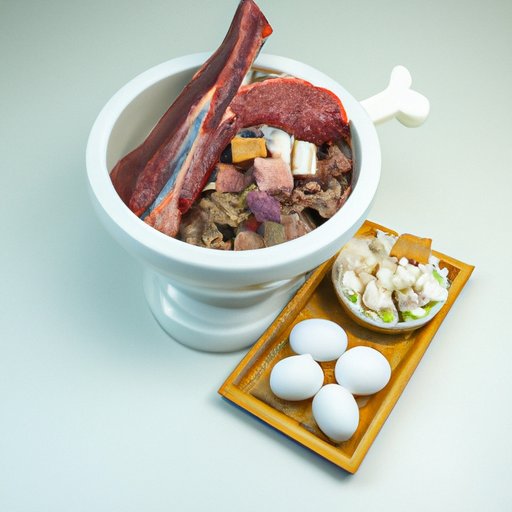Introduction
Pet owners have become more aware of the importance of providing proper nutrition for their furry friends. One area that has gained popularity in recent years is feeding dogs a raw diet. Raw feeding involves providing your dog with a diet primarily made up of raw meat, bones, fruits, and vegetables. In this article, we will explore the benefits and risks of a raw diet, types of raw diets, steps to creating a balanced meal, transitioning from kibble, and safety and hygiene practices.
Benefits and Concerns
One of the main benefits of a raw diet is the nutrition it provides. The high-quality protein found in raw meat is easier for dogs to digest and absorb compared to processed dog food. A raw diet also offers a greater variety of nutrients such as vitamins, minerals, and amino acids.
However, there are concerns about raw feeding. The risk of bacterial contamination, including salmonella and E. coli, is higher with raw meat. Nutritional balance is another concern since some raw diets may lack necessary minerals and nutrients. Variety in the diet is another critical factor as dogs require different nutrients. Hygiene practices regarding the handling and storage of raw meat are crucial for avoiding contamination.
Types of Raw Diets
There are two types of raw diets available, the BARF (biologically appropriate raw food) and prey-model diet.
BARF meals are designed to resemble a dog’s ancestral diet in the wild. The diet comprises 60-80% raw meaty bones, 10-15% fruit and vegetables, and 10-15% organ meat.
On the other hand, the prey-model diet is based on the theory that dogs are carnivorous animals and should consume predominately raw meat, organs, and bones. The diet includes 80-85% muscle meat, 10% bone, and 5-10% organ meat.
Creating a Balanced Raw Meal
A balanced raw meal should comprise protein sources, fruits and vegetables, and supplements. Chicken, beef, lamb, fish, and turkey are all safe protein sources for dogs. Fruits and vegetables like carrots, apples, and green beans contain vitamins, fiber, and minerals.
Supplements such as fish oil and probiotics can provide additional nutrients and support digestion and overall health. It’s essential to rotate protein sources to ensure your dog receives the required nutrients and to make the diet more interesting.
Transitioning to a Raw Diet
Transitioning to a raw diet should be done gradually to avoid digestive upset. Start by supplementing a small percentage of raw food to your dog’s kibble diet and gradually increase the amount over several weeks.
Introducing new proteins slowly can help acclimate a dog to a raw diet, as can feeding smaller, more frequent meals. Some dogs may experience loose stools or vomiting, which often resolves on its own within a day or two. However, if symptoms persist, it’s essential to consult with a veterinarian.
Handling and Storing Raw Food
Hygiene practices for handling and storing raw meat are crucial to avoiding contamination. Always use separate cutting boards, utensils, and bowls when preparing raw food. Clean all surfaces with soap and water, and disinfect with a bleach solution.
Store raw food in a separate fridge or freezer below 4°C to prevent bacteria growth. Always thaw frozen food in the fridge, not at room temperature.
Conclusion
Feeding your dog a raw diet requires attention to detail and proper food preparation. A balanced raw diet can offer numerous benefits to your furry friend, including improved digestion, a healthier coat, and a reduced risk of allergies. Gradual transition, hygiene practices, and balanced meal planning are crucial for successful raw feeding. Raw feeding may not be suitable for all dogs, so it’s essential to consult with your veterinarian before making the switch. Give raw feeding a try and see how your furry friend thrives with a balanced, nutritious meal plan.
(Note: Is this article not meeting your expectations? Do you have knowledge or insights to share? Unlock new opportunities and expand your reach by joining our authors team. Click Registration to join us and share your expertise with our readers.)
